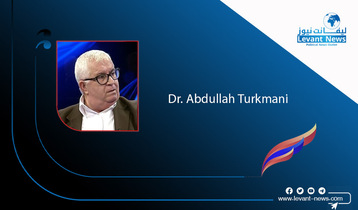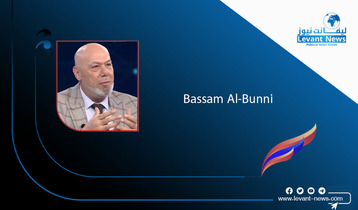-
Biden’s symbolic visit to Europe

President Joe Biden’s visit to Poland last week was both well-timed and symbolic. Well-timed because Poland had welcomed over 2 million refugees who had fled Ukraine after Vladimir Putin invaded his neighbour on February 24; symbolic because Biden represents the United States, the most powerful member of Nato, the Atlantic alliance set up at the start of the Cold War in 1949.
Air Force One landed on an airfield close to Poland’s border with Ukraine and Biden met officials from both countries and American soldiers and Ukrainians fleeing their homes. The US president had previously attended Nato, EU and G7 emergency summits in Brussels, all emphasizing the significance of transatlantic ties. “The single most important thing we had to do in the west is to be united,” he declared.
On Saturday in Warsaw he generated global headlines and frenzied posts on social media, by predicting that Putin “cannot remain in power” and described him as a “butcher.” An American official clarified shortly afterwards that the president was not calling for “regime change”. The Kremlin responded swiftly to say that it was a matter for the Russian people to choose their president.
The head of the Council for Foreign Relations, an elite Washington thinktank and veteran US diplomat, Richard Haas, criticized Biden on Twitter for having “made a difficult situation more difficult and a dangerous situation more dangerous.”
It was not the first time that POTUS spoke off the cuff without having considered the implications. On Thursday in Brussels he said Nato “would respond" if Russia used chemical weapons in Ukraine. But he did not spell out what that might mean. Asked whether the use of chemical weapons by Putin would prompt a military response from Nato, Biden replied that it "would trigger a response in kind".
Boris Johnson, the British prime minister, said it would be “catastrophic” if Putin used chemical weapons, while Nato
Secretary-General Jens Stoltenberg made clear it would result in severe consequences. The White House has set up a national security team to look at how the US and allies should react if Russia launched a chemical attack. But there is no suggestion Nato would respond by using chemical weapons as they are illegal under international law.
The key issue for Nato is to avoid imposing a no-fly-zone above Ukraine as demanded repeatedly by the country’s impressively articulate and media-savvy president, Volodomyr Zelenskiy, as that would risk aircraft from the Atlantic alliance being targeted by the Russian airforce, or vice versa, which would lead to a serious escalation.
“We repeat every day: Close the sky over Ukraine. Close for all Russian missiles, for Russian combat aircraft, for all their terrorists,” Zelenskiy said shortly after Putin launched his “special military operation”. Experts say setting up a NFZ would require destroying Russian air defences that could reach Nato aircraft in Ukraine and threatening to shoot down Russian planes over the country. “It would be a pretty dramatic escalation by Nato” one said.
In the last few days Nato has been grappling with the question of whether the Kremlin has indeed changed its strategic goals in Ukraine to focus on consolidating control of the eastern Donbas region, where Moscow claims Russian-backed separatists are controlling 93% of Luhansk and 54% of Donetsk.
"The main objectives of the first stage of the operation have generally been accomplished," said Sergei Rudskoi, head of the Russian General Staff's Main Operational Directorate. "The combat potential of the armed forces of Ukraine has been considerably reduced, which makes it possible to focus our core efforts on achieving the main goal - the liberation of Donbas."
Russia has previously pointed to far bigger ambitions – including the overthrow of what it calls the “neo-Nazi” Zelenskiy government and its replacement by a pro-Russian one. But stiff resistance from Ukraine forces, logistical problems and low morale may have made that unachievable.
Some analysts think that Putin has downgraded his aspirations with regard to Kyiv to convince the Russian people, while others assume that the public position is a smokescreen – or simply an outright lie – to deceive the Ukrainians and their allies. If the first scenario were true that might lead to permanent Russian control of Eastern Ukraine, echoing the split between North and South Korea.
But as the US-based Institute for the Study of War said in its latest assessment, “the increasingly static nature of fighting around Kyiv reflects the incapacity of Russian forces rather than any shift in Russian objectives of efforts at this time”.
The first month of Russia’s invasion was executed on Putin’s assumption that Ukraine is a false entity that would collapse quickly.
The Kremlin believed that Kyiv would fall, the Ukrainian army lay down its arms and millions of citizens greet their Russian “liberators”. None of those assumptions happened and Ukraine’s soldiers and citizens do not look at this point even close to breaking.
Only one thing is certain for now: this unprecedented and alarming crisis is far from over.

BY: IAN BLACK
You May Also Like
Popular Posts
Caricature
BENEFIT AGM approves 10%...
- March 27, 2025
BENEFIT, the Kingdom’s innovator and leading company in Fintech and electronic financial transactions service, held its Annual General Meeting (AGM) at the company’s headquarters in the Seef District.
During the meeting, shareholders approved all items listed on the agenda, including the ratification of the minutes of the previous AGM held on 26 March 2024. The session reviewed and approved the Board’s Annual Report on the company’s activities and financial performance for the fiscal year ended 31 December 2024, and the shareholders expressed their satisfaction with the company’s operational and financial results during the reporting period.
The meeting also reviewed the Independent External Auditor’s Report on the company’s consolidated financial statements for the year ended 31 December 2024. Subsequently, the shareholders approved the audited financial statements for the fiscal year. Based on the Board’s recommendation, the shareholders approved the distribution of a cash dividend equivalent to 10% of the paid-up share capital.
Furthermore, the shareholders endorsed the allocation of a total amount of BD 172,500 as remuneration to the members of the Board for the year ended 31 December 2024, subject to prior clearance by related authorities.
The extension of the current composition of the Board was approved, which includes ten members and one CBB observer, for a further six-month term, expiring in September 2025, pending no objection from the CBB.
The meeting reviewed and approved the Corporate Governance Report for 2024, which affirmed the company’s full compliance with the corporate governance directives issued by the CBB and other applicable regulatory frameworks. The AGM absolved the Board Members of liability for any of their actions during the year ending on 31st December 2024, in accordance with the Commercial Companies Law.
In alignment with regulatory requirements, the session approved the reappointment of Ernst & Young (EY) as the company’s External Auditors for the fiscal year 2025, covering both the parent company and its subsidiaries—Sinnad and Bahrain FinTech Bay. The Board was authorised to determine the external auditors’ professional fees, subject to approval from the CBB, and the meeting concluded with a discussion of any additional issues as per Article (207) of the Commercial Companies Law.
Speaking on the company’s performance, Mr. Mohamed Al Bastaki, Chairman BENEFIT , stated: “In terms of the financial results for 2024, I am pleased to say that the year gone by has also been proved to be a success in delivering tangible results. Growth rate for 2024 was 19 per cent. Revenue for the year was BD 17 M (US$ 45.3 Million) and net profit was 2 Million ($ 5.3 Million).
Mr. Al Bastaki also announced that the Board had formally adopted a new three-year strategic roadmap to commence in 2025. The strategy encompasses a phased international expansion, optimisation of internal operations, enhanced revenue diversification, long-term sustainability initiatives, and the advancement of innovation and digital transformation initiatives across all service lines.
“I extend my sincere appreciation to the CBB for its continued support of BENEFIT and its pivotal role in fostering a stable and progressive regulatory environment for the Kingdom’s banking and financial sector—an environment that has significantly reinforced Bahrain’s standing as a leading financial hub in the region,” said Mr. Al Bastaki. “I would also like to thank our partner banks and valued customers for their trust, and our shareholders for their ongoing encouragement. The achievements of 2024 set a strong precedent, and I am confident they will serve as a foundation for yet another successful and impactful year ahead.”
Chief Executive of BENEFIT; Mr. Abdulwahed AlJanahi commented, “The year 2024 represented another pivotal chapter in BENEFIT ’s evolution. We achieved substantial progress in advancing our digital strategy across multiple sectors, while reinforcing our long-term commitment to the development of Bahrain’s financial services and payments landscape. Throughout the year, we remained firmly aligned with our objective of delivering measurable value to our shareholders, strategic partners, and customers. At the same time, we continued to play an active role in enabling Bahrain’s digital economy by introducing innovative solutions and service enhancements that directly address market needs and future opportunities.”
Mr. AlJanahi affirmed that BENEFIT has successfully developed a robust and well-integrated payment network that connects individuals and businesses across Bahrain, accelerating the adoption of emerging technologies in the banking and financial services sector and reinforcing Bahrain’s position as a growing fintech hub, and added, “Our achievements of the past year reflect a long-term vision to establish a resilient electronic payment infrastructure that supports the Kingdom’s digital economy. Key developments in 2024 included the implementation of central authentication for open banking via BENEFIT Pay”
Mr. AlJanahi concluded by thanking the Board for its strategic direction, the company’s staff for their continued dedication, and the Central Bank of Bahrain, member banks, and shareholders for their valuable partnership and confidence in the company’s long-term vision.
opinion
Report
ads
Newsletter
Subscribe to our mailing list to get the new updates!




















